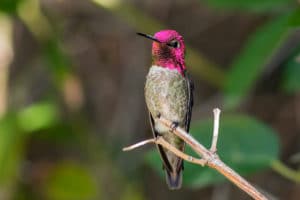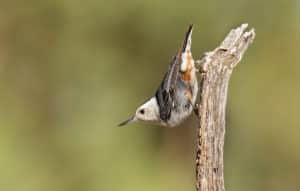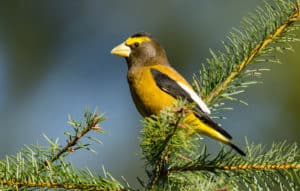
We highlight trends over the course of 80 years (1938-2017) for several notable species. We envision these selected preliminary results being a teaser for a broader and more in-depth analysis to come in the near future. To analyze trends from the Portland CBC, we use statistical techniques developed by researchers at the U.S. Geological Survey’s Patuxent Wildlife Research Center and at National Bird Alliance of Oregon. While there is much to learn from data from local CBC circles, analyses of these trends have important limitations.
First, while the species trend models control for observer effort, they do not address other variables (e.g., temperature, changes in land use, etc.), so our ability to interpret what is driving species trends is limited.
Second, because the data pertain only to the 15-mile-radius circle around Portland and only to the winter season, trends documented here may not reflect region-wide trends or trends in other seasons. For example, neotropical migrants and shorebird species that spend their winters south, many of which are declining and are species of concern, like Rufous Hummingbird, Willow Flycatcher, and Dunlin, are not covered. Still, although these trends should be interpreted cautiously, they provide a window into Portland’s “avifauna past” and help us gain perspective into how winter bird communities have fared over nearly a century.
The wealth of data collected by the Portland CBC lends perspective on how local and regional conservation efforts have benefited some species, while reflecting how other species face challenges surviving in Portland’s dynamic landscape. The CBC data also help us to look ahead and more effectively plan conservation action for the future.
What We’ve Found So Far
Peregrine Falcon: 9.5% annual increase
Peregrine populations were decimated by the use of DDT during the 1940s, 1950s, and 1960s. However, banning DDT in 1972 and listing the Peregrine under the Endangered Species Act in 1973 allowed this species to rebound successfully across the country, and it was removed from the Federal Endangered Species List in 1999. On the Portland CBC, Peregrines began to appear consistently starting in the mid-1990s, and since then have steadily increased in low numbers. Bird Alliance of Oregon played a role in protecting this species in the city as well as throughout Oregon.

Anna’s Hummingbird: 11.3% annual increase
Prior to 1968, this species had not been documented on the Portland CBC at all. Today, it is one of our most common birds. A recent study from the University of Washington suggests the dramatic northward range expansion of this California species was initially driven by introduced plants and hummingbird feeders, but that climate change may play an increasingly important role in shaping its future range.

Northern Flicker: 0.7% annual decrease
Our most common woodpecker and frequent backyard bird. Surprisingly, the Portland CBC documents a decline of this species with numbers reaching a low in the 1970s and 80s although there appears to be some level of recovery in recent years. It is a bit of a mystery why this adaptable bird has suffered a decline in Portland but it could be related to reduction in appropriate sites for nesting cavities..

White-breasted Nuthatch: 1.3% annual decrease
This nuthatch thrives in both mature riparian cottonwood and white oak savanna, but the majestic native oak habitat in particular has declined in the Portland metro area to a fraction of what it once was, suggesting a reason for the bird’s decline. In recent years, however, detections of this species have increased during the CBC. Could it be the start of a recovery?

Western Meadowlark: 4.8% annual decrease
Willamette Valley grassland bird populations have been in decline for decades. Habitat conversion for agriculture is a prime reason, while in the Portland area, open habitat has also been lost to urban/suburban development. Highest recorded numbers of meadowlarks on the Portland CBC were in the 1940s, tapering down to few detections in the 1990s and early 2000s. In the past 10 years, numbers have risen but are still much lower than in the early part of the 20th century.

Evening Grosbeak: 3.4% annual decrease
In the past 20 years, Evening Grosbeaks have been declining throughout their range. In Portland, CBC numbers were variable (ranging from single digits to over 200 birds), but starting in the early 1990s numbers dropped off, with many years seeing no detections. Range-wide causes of decline for this species may include boreal habitat loss due to tar sands exploitation, shifts in forest management to fast-growing softwoods, and window collisions.





